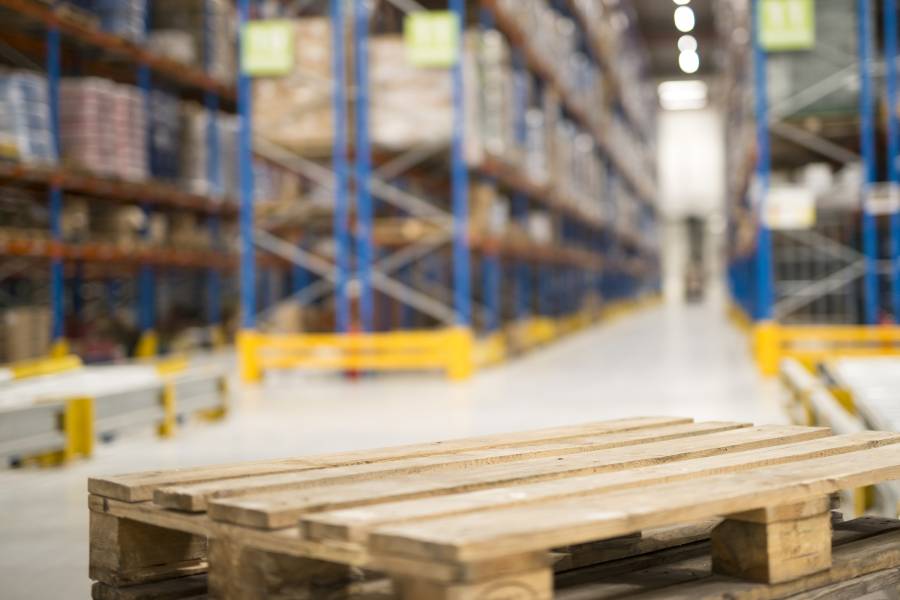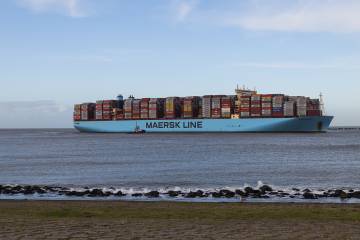Acute shortages of supplies to safely diagnose and treat patients with COVID-19 has crippled the United States' response to the coronavirus pandemic. Despite the importance of widespread and comprehensive testing for COVID-19, a joint statement issued two weeks ago by state health authorities and public health laboratories warned of a "widescale shortage of laboratory supplies and reagents" and urged health professionals to limit testing "until sufficient testing supplies and capacity become more widely available."
Goker Aydin is a professor of operations management at the Johns Hopkins Carey Business School whose research focuses on uncertainties in the supply chain. He joined Johns Hopkins MPH/MBA candidate Samuel Volkin for a brief discussion about how the COVID-19 pandemic is disrupting the global supply chain and how it's affecting people worldwide. The conversation has been edited for length and clarity.
What is a supply chain and what kinds of disruptions in the global supply chain has the COVID-19 pandemic caused?
This pandemic has had a major impact on the exchange of goods throughout the world. Let us think of a supply chain as a supply network. Groups of manufacturing facilities are connected by transportation routes with several storage nodes along the way.
In this pandemic, manufacturers that rely on labor-intensive processes that require people to work closely together have been disrupted because of social distancing requirements. For example, produce that relies on spring harvest might be in short supply come summer due to labor shortages. For other manufacturers, perhaps it will not be labor or raw materials that are in short supply, but the ability to have their product delivered. For example, transportation routes are at risk of disruption if truck drivers become sick. It's difficult to predict exactly where disruptions will be felt the most, but specific supply chains have been affected.
Which supply chains have been affected most in the U.S.?
Producers and distributers in the U.S. are facing increased demand for consumer packaged goods such as food, beverages, and cleaning products due to shoppers panic-buying in bulk. This is why we see empty shelves at grocery stores. But I don't think there is shortage in the food supply chain. We have the manufacturing, transportation, and storage capacity to deal with consumer packaged goods. In fact, it's not critical for people to be stocking up in their homes. There is no fundamentally broken piece of the food supply chain.
Prescription drugs may be different since the supply chain is more global and relies on China and India. China is a key supplier of the raw materials for prescription drugs and India has become a major producer of generic drugs. The shutdown in China and the recent lock-down in India may have an impact on the kinds of prescription drugs we see in this country and throughout the world. Two colleagues at the University of Michigan recently wrote in an article that even in the best of times, the U.S. drug supply chain is fragile. And we are not in the best of times.
Why is there still a shortage in the supply of COVID-19 test kits in the U.S.?
At the start of the outbreak in the U.S., there was a lot of concern about there not being enough test kits. Due to recent efforts and the easing of federal regulations, the test kit itself may no longer be the problem.
Now, there are other bottlenecks in the testing supply chain, with shortages of the physical components needed to carry out the tests. As reported in a recent New Yorker article, these bottlenecks include the viral transport media used to stabilize a specimen as it's transported to a lab, extraction kits used to isolate viral RNA from specimens once they're at the lab, and the reagents that actually determine whether the specimen is positive.
This phenomenon of "shifting bottlenecks" is not a surprise to supply chain experts. When you have a multi-tiered supply chain that operates in several stages, once you correctly identify and expend resources to alleviate a bottleneck, the next weakest link becomes the bottleneck. Bottlenecks shift as resources are expended on one but not the other.
But in times like this, it is hard to know which resources will emerge as the next area of concern and we will have to continue putting out fires as they come up to deal with supply shortages throughout the duration of this pandemic. There is no rulebook for a disruption of this scale and scope.
How have companies responded to meet the increased demand for food and consumer goods?
If people are buying more goods now, it is not necessarily because they are using more—they are stockpiling. When things get back to normal, consumers will have a lot of canned soup and toilet paper at home and won't need to buy more. It's not an easy decision for companies to invest significant resources to meet the spike in demand that might be unnatural and result in future losses.
Despite all of this, there have been efforts by manufacturers and retailers to improve things for consumers even though it might not be immediately beneficial for business. For example, grocery stores have established dedicated periods of the day for the elderly to have access to stores without exposure to others and stores have been imposing limits on the number of people permitted to shop at one time to allow for social distancing. Many stores are rationing in-demand products by putting a limit on quantities per customer.
Some of the responsibility is on the consumers themselves to realize that our actions have impact on others. The people most impacted by shortages at grocery stores are those with limited mobility and limited income who may not have dependable access to transportation, have limited amounts of cash, and may not be able to stockpile.
How can we be better prepared for a future crisis relative to supply chains?
Private companies have playbooks for supply chain disruptions in their network. In supply chain management, it is crucial to diversify your source of supplies so that when one supplier is impacted, you can turn to the other. But what is happening now is beyond the means of any individual company to deal with.
There is a role for government and international regulatory agencies to play in making our supply chains more resilient in future crises. For goods to flow freely, export restrictions must be removed. If you don't have time to ship something by ocean and you have to ship it by plane—and this is especially true for products like masks or swabs that were so cheap that their supply chains were built more for efficiency than resiliency—protocols must be in place for who is going to pay for it. These are the kinds of questions that require international cooperation.
Posted in Voices+Opinion, Politics+Society
Tagged business, q+a, coronavirus, medical supplies









